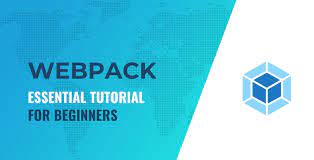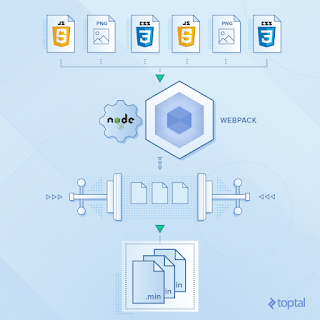Introduction:
Webpack has become an indispensable tool in modern front-end development. It is a powerful module bundler that optimizes JavaScript applications by bundling multiple modules and their dependencies into efficient and optimized bundles. With its vast range of features and functionalities, webpack has revolutionized the way we build and manage front-end applications.
Why We Use Webpack in Modern Frontend Applications:
Webpack offers several compelling reasons for its adoption in modern front-end applications. Firstly, it enables developers to embrace modular development by breaking down complex applications into smaller, manageable modules. This modular approach improves code organization, maintainability, and reusability, making it easier to collaborate and scale projects. Additionally, webpack optimizes the application's performance by implementing advanced bundling techniques like code splitting and lazy loading, resulting in faster load times and improved user experience.
Frontend Application Development Without Webpack:
Before the advent of webpack, frontend development primarily relied on manual script management and concatenation. Developers had to manually handle dependencies, ensuring the correct loading order of scripts, and managing potential conflicts. This approach was time-consuming, error-prone, and challenging to scale, especially in large projects. Consequently, it hindered productivity and hindered developers' ability to focus on crafting exceptional user experiences.
Benefits and Drawbacks of Building Frontend Applications Without Webpack:
Building frontend applications without webpack offered some advantages. It provided a straightforward setup, especially for smaller projects with minimal dependencies. Additionally, this approach allowed developers to have more control over the build process, tailoring it to their specific requirements. However, managing dependencies manually could quickly become cumbersome, leading to potential errors and inconsistencies. Moreover, optimizing and minifying assets required additional tools and configuration, adding complexity to the build pipeline.
Benefits and Drawbacks of Building Frontend Applications Using Webpack:
Leveraging webpack in frontend application development brings numerous benefits. The foremost advantage is its ability to handle complex module dependency resolution. Developers can effortlessly import and use modules from various sources, including third-party libraries, and webpack takes care of bundling them correctly. Additionally, webpack provides built-in support for asset optimization, such as minification, code splitting, and caching, resulting in faster page loads and improved performance. However, configuring webpack initially may require some learning curve, and incorrect setup can introduce complexities and challenges.
Implementing Webpack in Modern Applications:
To implement webpack in a modern application, the first step is to set up a webpack configuration file that defines the entry points, output paths, loaders, and plugins. Loaders enable webpack to process different file types, such as JavaScript, CSS, and images, while plugins extend its capabilities further. By leveraging loaders and plugins, developers can customize and enhance the build process based on their specific project requirements. Webpack provides a rich ecosystem of loaders and plugins contributed by the community, allowing developers to tailor the configuration to their project's needs.
Code Implementation and Configuration Settings to Setup Webpack in a React Application from Scratch:
To set up webpack in a React application from scratch, follow these steps:
1. Install webpack and its command-line interface globally:
2. Initialize a new npm project:
3. Install webpack and webpack-dev-server as development dependencies:
4. Create a webpack configuration file (e.g., webpack.config.js) and define the entry point and output path:
5. Set up the npm scripts in the package.json file to run the development server and build the project:
6. Run the development server to start your React application:
7. Build the optimized bundle for production:
Conclusion:
Webpack has emerged as an indispensable tool in modern frontend development, empowering developers to build highly modular, optimized, and scalable applications. Its ability to handle complex module dependencies, optimize assets, and streamline the build process significantly enhances productivity and improves user experience. By embracing webpack, developers can efficiently manage the intricacies of frontend development and focus on crafting exceptional applications in the ever-evolving landscape of web development.








Comments
Post a Comment